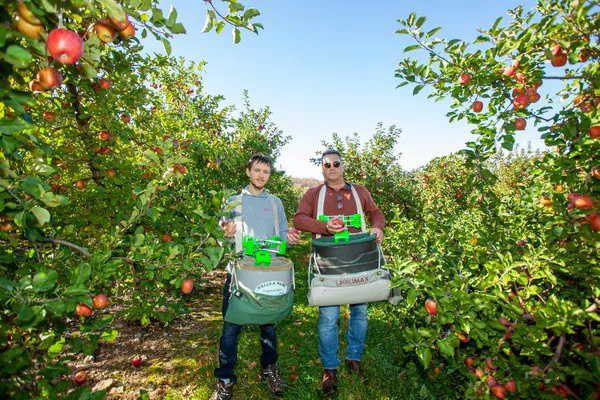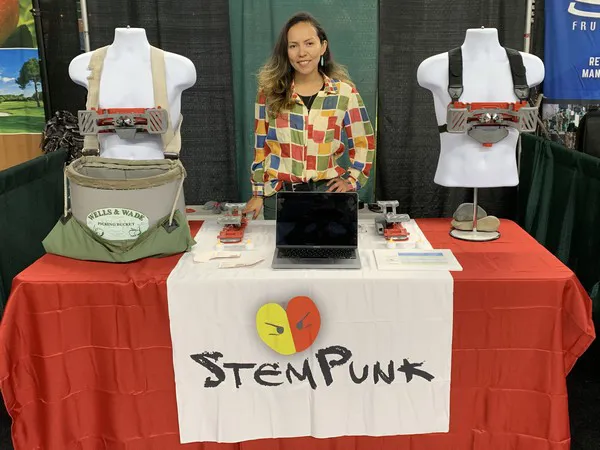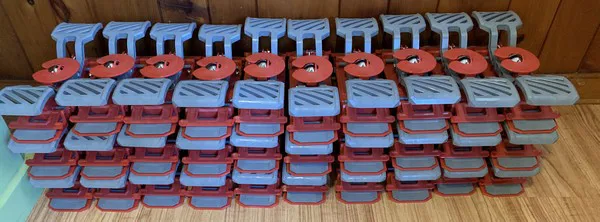Stem punctures in apples are a silent killer when it comes to profitability. “About eight-to-ten percent is a common level of punctures that I see in bins from the orchard,” says Leighton Rice developer of StemPunk. However, he has seen much higher numbers, up to twenty percent.
Punctures cause immediate downgrades and increase the pressure for secondary storage problems, inspiring Rice to look for a solution. Having started his career on the farm, he knows how hard it is to grow good apples and to be profitable at the same time. When he came to work in the packing house of his family’s company, Rice Fruit Co. back in 2014, he was horrified to see how much damage was caused by punctures.
“To me, it seemed that stem length on an apple was a relatively easy thing to control.” That’s how he started working on a tool to combat the problem of stem punctures.

Why was StemPunk invented?
Until now, hand clippers were the only solution to stem punctures, but they limit the picker to picking with one hand only. Penn State Extension did a study in 2014 which indicated a 33 percent loss in efficiency, from picking about 15 bushels per hour with two hands down to 10 bushels per hour with a clipper in one hand. Rice started working on developing a motorized solution back in 2016, which he called ‘Punctilius.’
“The first prototypes for that device were motorized and wearable on the wrist. However, they didn’t work in the orchard environment,” he shared. “It was an expensive mistake, but I kept on searching for a solution.” The result is an ambidextrous, hands-free clipper that attaches to the picker’s front. StemPunk trims stems efficiently, easily, safely. “And it’s fun too,” Rice Says, “it makes a nice ‘shunk’ sound every time you make a cut.”
 StemPunk on display.
StemPunk on display.
What are the benefits?
The main benefit of StemPunk is that it allows the picker to pick and clip with both hands independently. Early trials have shown that StemPunk gets the picker back up to 12 or 13 bushels per hour versus 10 bushels with hand-clippers.
“This is an incremental improvement, but a meaningful one. Even at 12 bushels per hour, the savings are about 25 cents in direct harvest costs every time the worker dumps his bag in the bin. At that rate, the tool pays for itself in less than a week. And that’s just a head-to-head against hand clipping - it doesn’t count the value of punctures avoided” commented Rice. Also, the conical shape of the blades matches the shape of the stem bowl to avoid extraneous damage, which is a problem seen often with the hand-clippers.

Are some apples more susceptible to stem damage than others?
Not all apples are equally susceptible to stem punctures. The risk depends on stem length, shape, and orientation. All these factors are related to variety and fruit set.
“The king bud tends to have longer stems, posing a higher risk. However, most growers prefer to keep the king through the thinning stage,” commented Rice. In addition, skin thickness and skin hardness are key variables. Varieties like Fuji and Honeycrisp have thin skin and are more susceptible to damage than Red Delicious, which has thicker skin. Many of the newer branded varieties have Honeycrisp parentage and thinner skin as a result. Given the potential for premium pricing in these varieties, stem clipping becomes even more important. “However, all apple varieties benefit from clipping stems.”
Where is StemPunk being used?
StemPunk launched late in the 2021 season but already has units being used by pickers in many states in the US. In addition, the tool is being used by pickers in Canada, Chile, New Zealand, Australia, Italy, Germany, Spain, Portugal, and the Netherlands.
“Demand is high,” he says, “almost too high. Many growers are intrigued about the tool and the potential to speed up harvest. Pickers are a bit more resistant, which I understand. I feel it is a solid improvement over hand-clipping and I think it will be successful.”
Click below to see a video of StemPunk in action.
 For more information:
For more information:
Leighton Rice
Rice Systems
[email protected]
www.stem-punk.com
